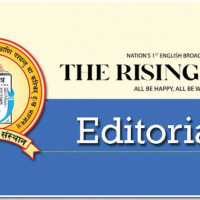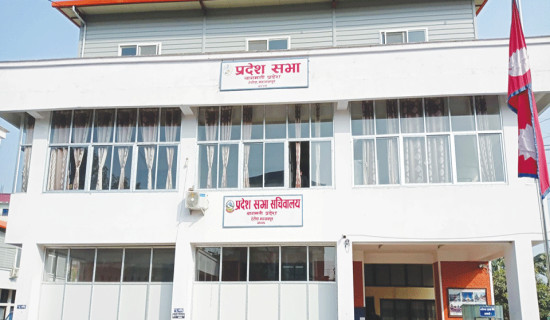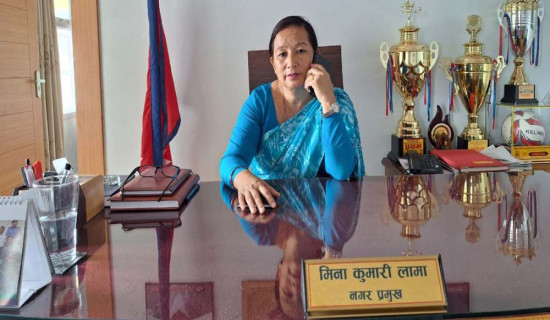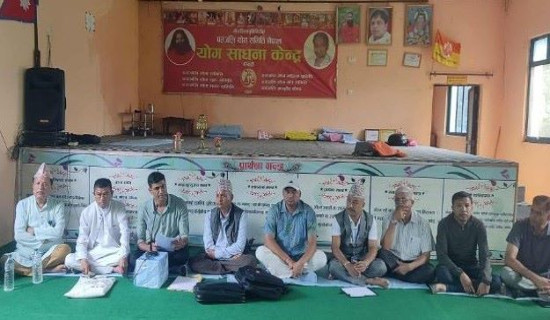- Sunday, 31 August 2025
Innovation Outpaces Nepal's Patent Laws
Shark Tank Nepal has quickly become a buzz in the market, giving a national platform to aspiring inventors and entrepreneurs with bold ideas. It has created new energy in the startup and innovation space. Aspiring entrepreneurs are coming forward with ideas that show creativity, market potential, and social impact. However, while this wave of innovation is being celebrated on screen and across social media, Nepal’s outdated intellectual property laws still fail to provide the level of protection these inventors truly need. The Patent, Design and Trademark Act, 1965, continues to guide the country’s patent framework, even though it no longer meets the demands of today’s evolving technology.
Ownership of an invention is established through its official registration. The process of registering a patent in Nepal comes with obstacles. Inventors and lawyers who have been working in this area for many years say that the system is confusing, poorly managed, and lacks proper support. Drafting a patent application is not easy; it requires technical and legal knowledge. Sadly, there are not enough professionals who can help with this. In most countries, such as the US, offices like the USPTO provide an online portal, which is also needed in Nepal.
Confusion
Ramlaxman Group, a Nepal-based team of innovators with a portfolio of significant inventions, stated that they could register at least ten patents immediately if the Department of Industry (DoI) demonstrated a clearer understanding of their innovations and streamlined the stringent and ambiguous registration process. They feel the committee that checks patent applications is not trained in modern technology and does not fully understand how to judge a new invention. In many cases, inventors were not even informed when it was time to renew their patents. As a result, they lost their rights. Some also gave up trying because they found the system too slow and difficult. There is also confusion among inventors about what can be patented.
For example, many people apply for patents for things like logos and emblems, which fall under trademark. Many applications are also rejected because they lack newness or industrial use. This shows there is a serious lack of awareness, both among inventors and officials. Internationally, Nepal has also failed to keep up. The country has not properly updated its membership in global patent systems, which has caused problems for inventors trying to register their patents abroad. Even though WIPO (World Intellectual Property Organisation) has provided training, software, and tools, they are not used well in Nepal.
Even after a patent is registered, protecting it is another challenge. The DoI is accountable for looking after this, but it has very limited capacity. The officials often say that Nepal does not have original inventions, and most of the patent applications are either repeated ideas or minor changes to existing things. But this view ignores the efforts of inventors and institutions like the National Innovation Centre, led by Mahabir Pun. Despite limited funding, the Centre has done great work in developing new technologies. Another problem is that many inventors do not fully understand what a patent is. Some think that just filing an application gives them the right, while others confuse patents with copyright. This happens because there is no awareness programme or proper guidance.
Nepal became a member of the World Trade Organisation (WTO) in 2004 and is expected to follow the rules under the TRIPS Agreement. Because Nepal is still a Least Developed Country, it has more time to fully apply some of the rules, especially for medicines. But even with this extra time, the current patent law is far from what TRIPS expects. TRIPS requires that patents should last for 20 years. But in Nepal, a patent lasts only 7 years with a renewable facility; however, it often gets unattended.
Nepal needs a new patent law that fits today’s world. In the generation of Artificial Intelligence, Machine Learning and Deep Learning, the existing law from 1965 does not support inventors, businesses, angel investors/venture capitalists, as demonstrated by the reality show Shark Tank Nepal. The patent registration process should be simpler. The DoI should have trained people who can understand and guide inventors. The forms and details should be available online, and people should be given help to fill them out properly.
Innovation fund
Schools and universities should teach students about patents and other intellectual property. This can help young people understand how to protect their ideas and turn them into a tangible outcome. The government should also set up an innovation fund to help inventors who cannot afford the cost of developing their projects. There should be lawyers and experts who can support inventors, especially those with limited resources. There should also be awareness programmes to explain the differences between patent, copyright, trademark, and trade secret. This will clear up confusion and help inventors know where to apply. The punishment for stealing an invention should be increased. Right now, the fine is not astronomical and is less stringent. At the same time, the government should honour inventors once their patent is approved. This builds confidence and motivates others to innovate.
Patent protection in Nepal is still very weak. Many inventors lose hope due to a lack of support, unamended laws, and slow processes. The government is also not active enough in fixing the law or encouraging innovation. Both sides, the inventors and the authorities, need to take responsibility. A modern law, trained professionals, better communication, and stronger enforcement are key. If Nepal wants to grow in science, technology, and industry, protecting patent rights should be a top priority. With better efforts, Nepal can create a better system for protecting ideas and inventions. This will help young minds, attract investors, and push the country towards becoming a hub for innovation in the region.
(Dr. Poudel holds a PhD in Patent Law and has over 35 years of experience in teaching and advocacy.)
















